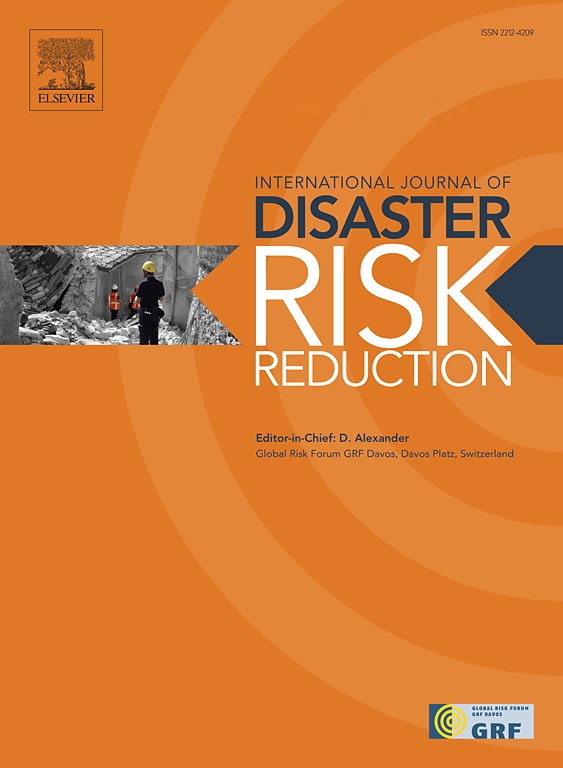Street-scale hydrodynamic estimation from social media videos: A systematic approach to urban floods data collection
IF 4.2
1区 地球科学
Q1 GEOSCIENCES, MULTIDISCIPLINARY
International journal of disaster risk reduction
Pub Date : 2025-03-21
DOI:10.1016/j.ijdrr.2025.105419
引用次数: 0
Abstract
An increasing number of evidence highlights how climate change and urbanization are contributing to exacerbate floods impacts. In this framework, flood modelling assumes a key role in supporting the analysis of floods dynamics, especially in urban areas. Recent advances in this topic enabled detailed street-level studies, offering significant potential for flood reconstruction, nowcasting, and forecasting. However, calibration and validation of hydrodynamic models face challenges due to limited availability of flood data. Recent studies highlighted the potential of social media as a valuable resource for urban flood analysis, yet significant challenges persist, particularly in leveraging videos data to retrieve floodwater characteristics, leading to the loss of a relevant amount of potentially useful information. In this paper, to tackle this issue, a five-step workflow for the systematic research and extraction of key hydrodynamic variables from flood-related videos uploaded on social media is proposed. The aim of this procedure is the retrieval of diffused and quality-controlled estimates of floodwater characteristics to support hydrodynamic modelling and dampening the gap due to the lack of field measurements. The workflow was tested to the flood occurred in 2020 in the city of Crotone (southern Italy). The results underscore the potential of the proposed procedure to provide detailed data for flood impact assessment, paving the way for improved street-level hydrodynamic studies and model validation. This approach not only could enhance the quality control of the dataset but also allows for the limitation of information loss, which is critical for supporting a broader distributed validation.
求助全文
约1分钟内获得全文
求助全文
来源期刊

International journal of disaster risk reduction
GEOSCIENCES, MULTIDISCIPLINARYMETEOROLOGY-METEOROLOGY & ATMOSPHERIC SCIENCES
CiteScore
8.70
自引率
18.00%
发文量
688
审稿时长
79 days
期刊介绍:
The International Journal of Disaster Risk Reduction (IJDRR) is the journal for researchers, policymakers and practitioners across diverse disciplines: earth sciences and their implications; environmental sciences; engineering; urban studies; geography; and the social sciences. IJDRR publishes fundamental and applied research, critical reviews, policy papers and case studies with a particular focus on multi-disciplinary research that aims to reduce the impact of natural, technological, social and intentional disasters. IJDRR stimulates exchange of ideas and knowledge transfer on disaster research, mitigation, adaptation, prevention and risk reduction at all geographical scales: local, national and international.
Key topics:-
-multifaceted disaster and cascading disasters
-the development of disaster risk reduction strategies and techniques
-discussion and development of effective warning and educational systems for risk management at all levels
-disasters associated with climate change
-vulnerability analysis and vulnerability trends
-emerging risks
-resilience against disasters.
The journal particularly encourages papers that approach risk from a multi-disciplinary perspective.
 求助内容:
求助内容: 应助结果提醒方式:
应助结果提醒方式:


